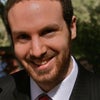
The space was austere, the choir heavenly, and the images of Jesus - only slightly discomfiting.
I, a rabbinical student, had been invited to share in the Sunday Worship Service at Marsh Chapel at Boston University, a service that was geared towards interfaith engagement. It was an amazing example of living out the interfaith ideal of hosting the religious other, enabling the host to exhibit hospitality and the visitor to feel welcomed, safe enough to share of their own tradition.
For all of the interfaith work I do as Editorial Director of State of Formation, sitting in the chancel of Marsh Chapel brought home to me where interfaith engagement really happens. As many of the Contributing Scholars on State of Formation describe so eloquently, the real engagement occurs when we meet the religious other and get to know them, whether it is in our house of worship, theirs, around the dinner table or on a college campus.
Growing up, churches were simply buildings that I did not enter. Not because I felt unwelcome by Christians, but because I didn't even know any of them in the first place. I had similarly never heard of a rabbi or other Jewish leader being invited into a church service. The inter-religious landscape is changing, helped in large part by programs like CIRCLE, which have provided fertile ground on which to build relationships that transcend stereotypes. I would never have entered Marsh Chapel if I had not first known Rev. Soren Hessler, who works with me at CIRCLE, and had he not conceived of the idea for an interfaith Sunday liturgy based as well on his relationships with the religious other, in this case myself and Shehla Zakaullah, a Muslim leader also involved in CIRCLE's work.
Not only was I invited into the church as an honored guest, and allowed to read for the congregation the Hebrew text of the Psalm chosen for that morning's liturgy, but I was also made to feel at home through the stories told in the sermon around which the morning centered. Soren spoke beautifully about how Reb Zalman zt"l came to the very chapel in which we were sitting as a young student, only to be put off by the dominant carved images of Jesus and the four Evangelists (as told in his memoir My Life in Jewish Renewal). In time, however, and with the help of dean Howard Thurman, Reb Zalman was made comfortable enough to pray in the building (if not in the main chapel), and soon became one of Thurman's students.
To learn something new about a figure I greatly admire within my own tradition from the pulpit of a church was a deeply moving experience. The church was speaking in my language, for my sake, and I couldn't have felt more comfortable at that moment, which allowed me to feel no anxiety whatsoever about concluding the sermon with a Hebrew recitation.
One of the most powerful elements on display in the service was the sharing of language. Not only did a Muslim woman and a Jewish man stand at the head of a Christian worship service, but we were able to share of our own sacred languages while doing so. Judaism and Christianity share the Hebrew Bible as scripture, originally written in Hebrew, and therefore there was something inherently familiar in my reading from a Hebrew text that both Judaism and Christianity view as sacred. More stark, on its surface, was Shehla reading a Quranic passage in melodious Arabic in a church. However, on further reflection, the power of the event was in each of us bringing our own language; not in the sense of Hebrew, English or Arabic, but in the sense that each religious tradition, and each individual's embodiment of that tradition, is a language all its own. In Marsh Chapel, we had many different religious language represented, each given their turn at the pulpit to share of themselves, hopefully allowing the congregation to connect in their own way to the truth embedded within each one.
To listen to the service, subscribe to the podcast here.
